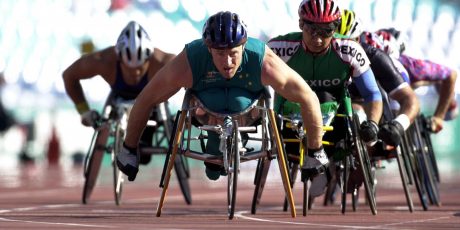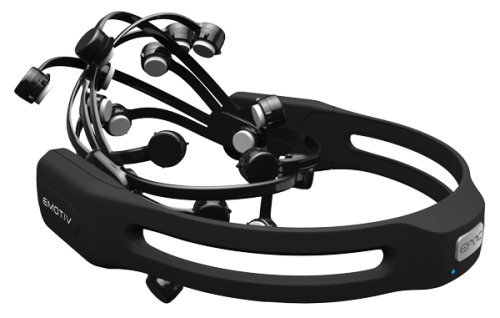
Five amazing inventions supporting disability in sport
With the Paralympics now underway it got me thinking: we work with tech every day and think nothing of it, but for some people technology is the only reason they’re able to get up and do what they love.
I was thinking specifically about the way technology has helped people with physical disabilities get involved in sport over the years and achieve some incredible athletic feats despite their impairments.
It felt like a good time to look back on some of the inventions that have played a part in that, and some that are currently in development.
Here are five of my favourites…
Paragolfer
I love this story. Golf-lover Anthony Netto was told he’d never be able to play the sport again after being paralysed during a tour of Iraq while serving in the army.
But his love of the game and refusal to just sit back and give up spurred him on to invent something amazing: the Paragolfer.
Launched in 2001, this product acts as a kind of hybrid between golf buggy and assistive technology. Transporting users around the course and then lifting them into the correct standing position when they need to take a swing.
Anthony was able to go on playing the sport he loved. But even better, many others were also able to do so thanks to one man’s drive (no pun intended) and ingenuity.
Inspiring stuff!
eAscot
Ever run a marathon? How about running a marathon blind, with nobody around to help guide you?
That was the problem faced by marathon runner Simon Wheatcroft, who lost his site aged 17 and started running competitively to curb his boredom.
He started off using a guide dog or running with other people. But what about when he wanted to train or even compete alone?
Simon worked with an app developer to create eAscot, named after his guide dog – how heart-warming is that?.
The app uses satellite navigation and sensors similar to those used to park a car to help Simon stay on course without the help of a guide.
If that’s not impressive enough in itself, Simon went on to run 100 miles of a 150-mile ultra-marathon across the Nambian desert! And yes, he competed alone.
Brainsled
One of the things I love about working in tech at the moment is the number of times I hear people say, “It’s like something out of a sci-fi novel.”
This invention is certainly one that’s likely to elicit that phrase…
Engineering students at Imperial College wanted to come up with a way for people who are paralysed to take part in bobsleigh racing.
Their answer was to use Emotiv EPOC, a ‘mind-reading’ headset that interprets brainwaves. By connecting it to a bobsleigh the device could be trained to ‘steer’ the vehicle left and right.

This also raises another question for sports of the future: by taking away the physical element of sports you end up with something that’s still very much physical but relies on thinking rather than physical strength.
Much like a real-world computer game!
Bruise
One of the biggest risks for paraplegics who play sport is that due to their lack of sensation they may not realise when they’ve been seriously injured.
Enter Bruise – an injury-detection suit crated by Paralympic sit-skier Talan Skeels-Piggins that uses a pressure-sensitive film to indicate the severity of an injury after an accident. In real time.
If an area of the suit come under severe stress, it changes colour to indicate a high risk of injury in that specific spot.
This means athletes can either seek medical treatment immediately or have the peace of mind that the bang was nothing serious.
3D-printing
We all know and love 3D-printing by now. But did you know it plays a big part in helping disabled athletes achieve faster and faster times every year?
With the help of computer-aided design, 3D-printing is impacting everything from the weight of athletes’ wheelchairs to the aerodynamic quality of prosthetic limbs.
BMW’s Designworks even carried out full-body scans on the US Paralympics team in advance of this year’s games to create personalised wheelchairs for every one of them.
I’m looking forward to seeing where this technology heads in the next few years when it comes to assistive technology in sport.
***
So there you have it: five inventions helping disabled people everywhere get up and play sports despite the hurdles that would otherwise have prevented them from doing so.
It’s inspiring to see that many of these came from people who didn’t want to take no for an answer when faced with the possibility of having to give up doing something they love.
I’m reminded of something Aimee Mullins – someone who has achieved incredible things despite having lost both legs at a young age – said in her talk our GSX event this year:
“Don’t let others determine your potential.”
It’s safe to say the likes of Talan, Simon and Anthony aren’t doing that!
Can you think of any other technology supporting disability in sport? I’d love to hear about it in the comments below!
Tags:



1 Comments